 Search by Keyword
Sign Up Below for our MONTHLY BEATLES TRIVIA QUIZ!
|
“AND YOUR BIRD CAN SING”
(John Lennon – Paul McCartney)
“Meaningless psychedelia.” “Full of the fake wisdom of those philosophically lightweight days.” “Patronizing and sympathetic.” “Taunting the limitations of the analytical mind.”
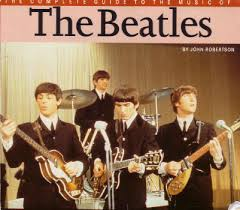 These phrases are some examples used by authors to describe the lyrics of The Beatles’ masterful 1966 “Revolver” song “And Your Bird Can Sing.” While the musicality displayed on the track easily gains admiration from writers across the board, the lyrics appear, as John Robertson describes in his book "The Complete Guide To The Music Of The Beatles," “rich and mysterious.” These phrases are some examples used by authors to describe the lyrics of The Beatles’ masterful 1966 “Revolver” song “And Your Bird Can Sing.” While the musicality displayed on the track easily gains admiration from writers across the board, the lyrics appear, as John Robertson describes in his book "The Complete Guide To The Music Of The Beatles," “rich and mysterious.”
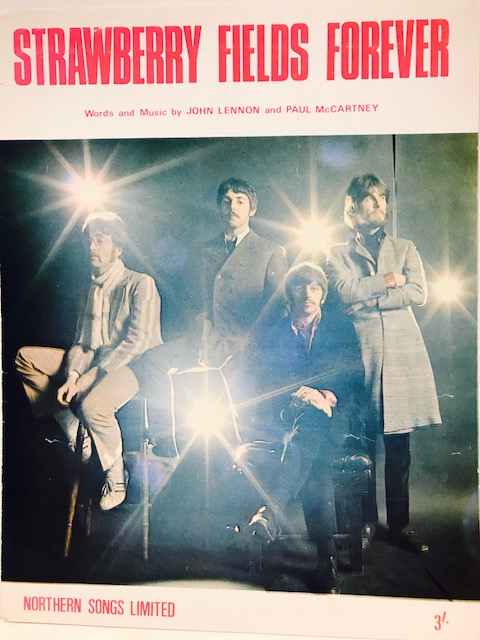 There appears to be a fine line that needs to be drawn between analyzing the lyrics of this song in excruciating detail, as some authors try to do, and simply looking at these words at face value. Keeping in mind that John Lennon’s opinions of the song include “another horror” (“Hit Parader” 1971) and “another of my throwaways” (“Playboy” 1980), we can conclude that these lyrics were not meant to be dissected to reveal any deep or hidden meaning. Nonetheless, a significant meaning, I feel, can be extracted by attempting to delve into the mind of ‘the John Lennon of 1966’ as we’ve come to understand. After all, as I’m sure all historians will agree, the same man who wrote “I Feel Fine” and “Any Time At All” in 1964 was not exactly the man who wrote “And Your Bird Can Sing” and “Strawberry Fields Forever” two years later. There appears to be a fine line that needs to be drawn between analyzing the lyrics of this song in excruciating detail, as some authors try to do, and simply looking at these words at face value. Keeping in mind that John Lennon’s opinions of the song include “another horror” (“Hit Parader” 1971) and “another of my throwaways” (“Playboy” 1980), we can conclude that these lyrics were not meant to be dissected to reveal any deep or hidden meaning. Nonetheless, a significant meaning, I feel, can be extracted by attempting to delve into the mind of ‘the John Lennon of 1966’ as we’ve come to understand. After all, as I’m sure all historians will agree, the same man who wrote “I Feel Fine” and “Any Time At All” in 1964 was not exactly the man who wrote “And Your Bird Can Sing” and “Strawberry Fields Forever” two years later.
Songwriting History
“’And Your Bird Can Sing’ was John’s song,” McCartney relates. “I suspect that I helped with the verses because the songs were nearly always written without second and third verses. I seem to remember working on that middle-eight with him but its John’s song, 80-20 to John.”
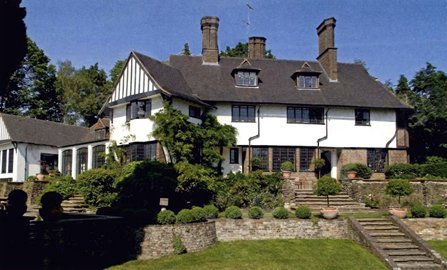 This explanation lends itself to the belief that the song was another product of a songwriting session at John’s Kenwood home during the early months of 1966. Being that the group had taken a four month "sabbatical" from their previous hectic year, this interesting song was undoubtedly written during this period, which stretches from January through till April 20th, 1966 when the song was first attempted in the studio. Paul's signature at the bottom of the original lyric sheet for this song, which was titled "You Don't Get Me" at this early stage, seems to indicate that Paul did at least play a part in its composition. This explanation lends itself to the belief that the song was another product of a songwriting session at John’s Kenwood home during the early months of 1966. Being that the group had taken a four month "sabbatical" from their previous hectic year, this interesting song was undoubtedly written during this period, which stretches from January through till April 20th, 1966 when the song was first attempted in the studio. Paul's signature at the bottom of the original lyric sheet for this song, which was titled "You Don't Get Me" at this early stage, seems to indicate that Paul did at least play a part in its composition.
 Regarding the writing sessions he and Paul had in 1966, John revealed their intended schedules in an interview that year: “It’s too easy to put it off if we just meet without any plan and say, ‘Shall we write something today?’ If you do that then you feel as though you’re losing a free day. What we’re going to do is make dates beforehand and sort of say, ‘Right, Wednesday and Friday of this week are (reserved) for songwriting, and Tuesday, Wednesday and Thursday of next week.’ Then we’ll know it’s something we’ve to keep to.” It is within this framework that “And Your Bird Can Sing” was written. Regarding the writing sessions he and Paul had in 1966, John revealed their intended schedules in an interview that year: “It’s too easy to put it off if we just meet without any plan and say, ‘Shall we write something today?’ If you do that then you feel as though you’re losing a free day. What we’re going to do is make dates beforehand and sort of say, ‘Right, Wednesday and Friday of this week are (reserved) for songwriting, and Tuesday, Wednesday and Thursday of next week.’ Then we’ll know it’s something we’ve to keep to.” It is within this framework that “And Your Bird Can Sing” was written.
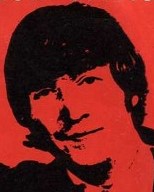 It can also be stated that, since minor lyric changes were later instituted to the song on its last recording date on April 26th, 1966, the writing of “And Your Bird Can Sing” extends all the way to the final day of its being recorded. As to the intended lyrical meaning, or what we can at least deduce, that will be tackled below under "Song Structure and Style." It can also be stated that, since minor lyric changes were later instituted to the song on its last recording date on April 26th, 1966, the writing of “And Your Bird Can Sing” extends all the way to the final day of its being recorded. As to the intended lyrical meaning, or what we can at least deduce, that will be tackled below under "Song Structure and Style."
Recording History
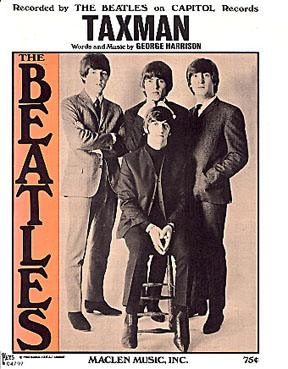 On April 20th, 1966, The Beatles entered EMI Studio Two at 2:30 pm for their eighth recording session for what soon became their British “Revolver” album. This session lasted a whopping twelve hours, ending at 2:30 am the following day. Surprisingly, not one note played during this session was deemed worthy of being released at the time. The two songs attempted on this day, these being “And Your Bird Can Sing” and George Harrison’s “Taxman,” were both started afresh during later sessions. On April 20th, 1966, The Beatles entered EMI Studio Two at 2:30 pm for their eighth recording session for what soon became their British “Revolver” album. This session lasted a whopping twelve hours, ending at 2:30 am the following day. Surprisingly, not one note played during this session was deemed worthy of being released at the time. The two songs attempted on this day, these being “And Your Bird Can Sing” and George Harrison’s “Taxman,” were both started afresh during later sessions.
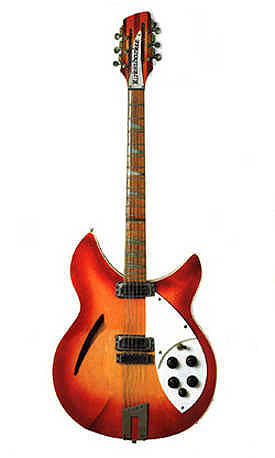 Considerable session time was first spent working out an arrangement and recording rhythm tracks for “And Your Bird Can Sing.” Playing the song in they key of D major, they decided to go for a Byrds-like sound with George using his 1965 Rickenbacker 360/12-string guitar, along with John on electric rhythm guitar and Ringo on drums, all of these elements being recorded onto track one of the four-track tape. "Take two" was deemed best (John’s voice at the end is heard saying “That was it, wasn’t it?) and was subject to various overdubs. Considerable session time was first spent working out an arrangement and recording rhythm tracks for “And Your Bird Can Sing.” Playing the song in they key of D major, they decided to go for a Byrds-like sound with George using his 1965 Rickenbacker 360/12-string guitar, along with John on electric rhythm guitar and Ringo on drums, all of these elements being recorded onto track one of the four-track tape. "Take two" was deemed best (John’s voice at the end is heard saying “That was it, wasn’t it?) and was subject to various overdubs.
 Onto track three, John and Paul overdubbed lead vocals with George joining in on harmony at various points, as well as Paul doubling George's lead guitar riffs. Onto track two, Paul overdubbed his bass part, Ringo played tambourine, John sang vocals during the bridges of the song and George added more lead guitar riffs. These three tracks of this first version of "And Your Bird Can Sing" are included in the 2022 Deluxe editions of "Revolver." Onto track three, John and Paul overdubbed lead vocals with George joining in on harmony at various points, as well as Paul doubling George's lead guitar riffs. Onto track two, Paul overdubbed his bass part, Ringo played tambourine, John sang vocals during the bridges of the song and George added more lead guitar riffs. These three tracks of this first version of "And Your Bird Can Sing" are included in the 2022 Deluxe editions of "Revolver."
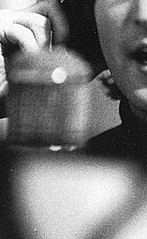 John and Paul then attempted to double-track their vocals onto the fourth track of the tape, this resulting in the two of them getting an acute case of the giggles. On track three, just before he began singing, John made a “munching” sound with his mouth, which put them both in hysterics throughout this new vocal overdub even though they did try to regain composure at some points. John sang the first line of the second bridge as “when your bike is broken” instead of “bird is broken” as heard on track three and, to end this obviously faulted overdub that couldn’t be used, finished it off with purposely off-key whistling during what would have been the fade-out. John and Paul then attempted to double-track their vocals onto the fourth track of the tape, this resulting in the two of them getting an acute case of the giggles. On track three, just before he began singing, John made a “munching” sound with his mouth, which put them both in hysterics throughout this new vocal overdub even though they did try to regain composure at some points. John sang the first line of the second bridge as “when your bike is broken” instead of “bird is broken” as heard on track three and, to end this obviously faulted overdub that couldn’t be used, finished it off with purposely off-key whistling during what would have been the fade-out.
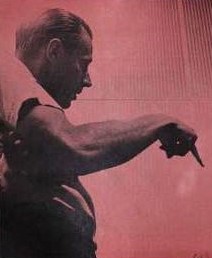 All four tracks of this rendition of the song are included on the 1996 release “Anthology 2,” while tracks one, two and four (omitting the original vocal track but highlighting the giggling vocals) are contained in the 2022 Deluxe editions of "Revolver." Concerning the version included on "Anthology 2," Paul stated in 1995, "You couldn't have released it at the time, but now you can. Sounds great just hearing us lose it on a take." George Martin agreed, "You can't help laughing with them, it's so funny." All four tracks of this rendition of the song are included on the 1996 release “Anthology 2,” while tracks one, two and four (omitting the original vocal track but highlighting the giggling vocals) are contained in the 2022 Deluxe editions of "Revolver." Concerning the version included on "Anthology 2," Paul stated in 1995, "You couldn't have released it at the time, but now you can. Sounds great just hearing us lose it on a take." George Martin agreed, "You can't help laughing with them, it's so funny."
 At approximately midnight, a total of nine-and-a-half hours had been spent putting together this elaborate recording which, minus the “giggling” vocal track, would have made a suitable addition to the resulting “Revolver” album. Many today even argue that this is the better version, albeit this opinion may be biased by not hearing this gem until three decades after the released version came out. Nonetheless, this excellent rendition was deemed unworthy for the album, possibly because of wanting to tighten up the harmony guitar work which ultimately became the focal point of the song during its next session. The decision to re-record the song may not have been made until later, however, because five mono mixes were created at the end of this day by producer George Martin and engineers Geoff Emerick and Phil McDonald. At approximately midnight, a total of nine-and-a-half hours had been spent putting together this elaborate recording which, minus the “giggling” vocal track, would have made a suitable addition to the resulting “Revolver” album. Many today even argue that this is the better version, albeit this opinion may be biased by not hearing this gem until three decades after the released version came out. Nonetheless, this excellent rendition was deemed unworthy for the album, possibly because of wanting to tighten up the harmony guitar work which ultimately became the focal point of the song during its next session. The decision to re-record the song may not have been made until later, however, because five mono mixes were created at the end of this day by producer George Martin and engineers Geoff Emerick and Phil McDonald.
 On April 26th, 1966, which was six days later and the eleventh recording session for the British “Revolver” album, The Beatles started another twelve hour session (actually twelve hours and fifteen minutes) in EMI Studio Two with their sole mission to record an entirely new version of the song "And Your Bird Can Sing." According to Mark Lewisohn in his book "The Beatles Recording Sessions," the first take of the rhythm track recorded this day “was a very heavy recording but the song grew progressively lighter after that, although guitars were always well to the fore.” “Okay boys, quite brisk, er, moderato, foxtrot!” were the words John Lennon used to start off "take one," which was his humorous reference to directives found on sheet music of the time and/or labels of 78rpm discs of dance band music. On April 26th, 1966, which was six days later and the eleventh recording session for the British “Revolver” album, The Beatles started another twelve hour session (actually twelve hours and fifteen minutes) in EMI Studio Two with their sole mission to record an entirely new version of the song "And Your Bird Can Sing." According to Mark Lewisohn in his book "The Beatles Recording Sessions," the first take of the rhythm track recorded this day “was a very heavy recording but the song grew progressively lighter after that, although guitars were always well to the fore.” “Okay boys, quite brisk, er, moderato, foxtrot!” were the words John Lennon used to start off "take one," which was his humorous reference to directives found on sheet music of the time and/or labels of 78rpm discs of dance band music.
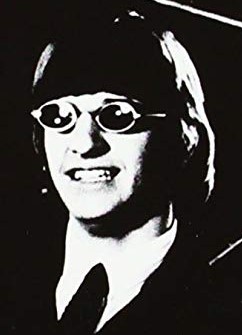 Changing the key from D major to E major, track one of the four-track take consisted of both John and George on rhythm guitar, Paul on bass and Ringo on drums. Beginning at "take three," keeping in mind the first two takes from April 20th, their third attempt on this day ("take five") was deemed best at this point. Overdubs were then recorded, track two containing George's lead guitar riffs and track four containing John and Paul's harmony vocals, this version also being featured on the 2022 Deluxe editions of "Revolver." Possibly because of wanting to improve upon the lead guitar passages, they diverted back to trying to capture the perfect rhythm track for the song, the word "BEST" being crossed off on the tape box for "take five." Changing the key from D major to E major, track one of the four-track take consisted of both John and George on rhythm guitar, Paul on bass and Ringo on drums. Beginning at "take three," keeping in mind the first two takes from April 20th, their third attempt on this day ("take five") was deemed best at this point. Overdubs were then recorded, track two containing George's lead guitar riffs and track four containing John and Paul's harmony vocals, this version also being featured on the 2022 Deluxe editions of "Revolver." Possibly because of wanting to improve upon the lead guitar passages, they diverted back to trying to capture the perfect rhythm track for the song, the word "BEST" being crossed off on the tape box for "take five."
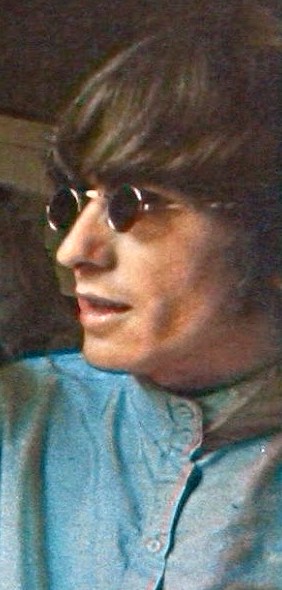 The rhythm track of the next takes recorded onto track one of the four-track tape was reduced to John on rhythm guitar and Ringo's drums, the key of the song continuing to be E major. The takes extended to "take 13," but "take ten" ended up being deemed the best. Concerning the overdub contained on track two, George Harrison recalled in 1987, “I think it was Paul and me...playing in harmony, quite a complicated little line that goes through the middle-eight.” In the book contained in the Deluxe editions of "Revolver," Paul states, "It's a harmony riff. George and I would work out a melody line, then I would work out the harmony to it. So we'd do it as a piece. It's just the two of us live." The rhythm track of the next takes recorded onto track one of the four-track tape was reduced to John on rhythm guitar and Ringo's drums, the key of the song continuing to be E major. The takes extended to "take 13," but "take ten" ended up being deemed the best. Concerning the overdub contained on track two, George Harrison recalled in 1987, “I think it was Paul and me...playing in harmony, quite a complicated little line that goes through the middle-eight.” In the book contained in the Deluxe editions of "Revolver," Paul states, "It's a harmony riff. George and I would work out a melody line, then I would work out the harmony to it. So we'd do it as a piece. It's just the two of us live."
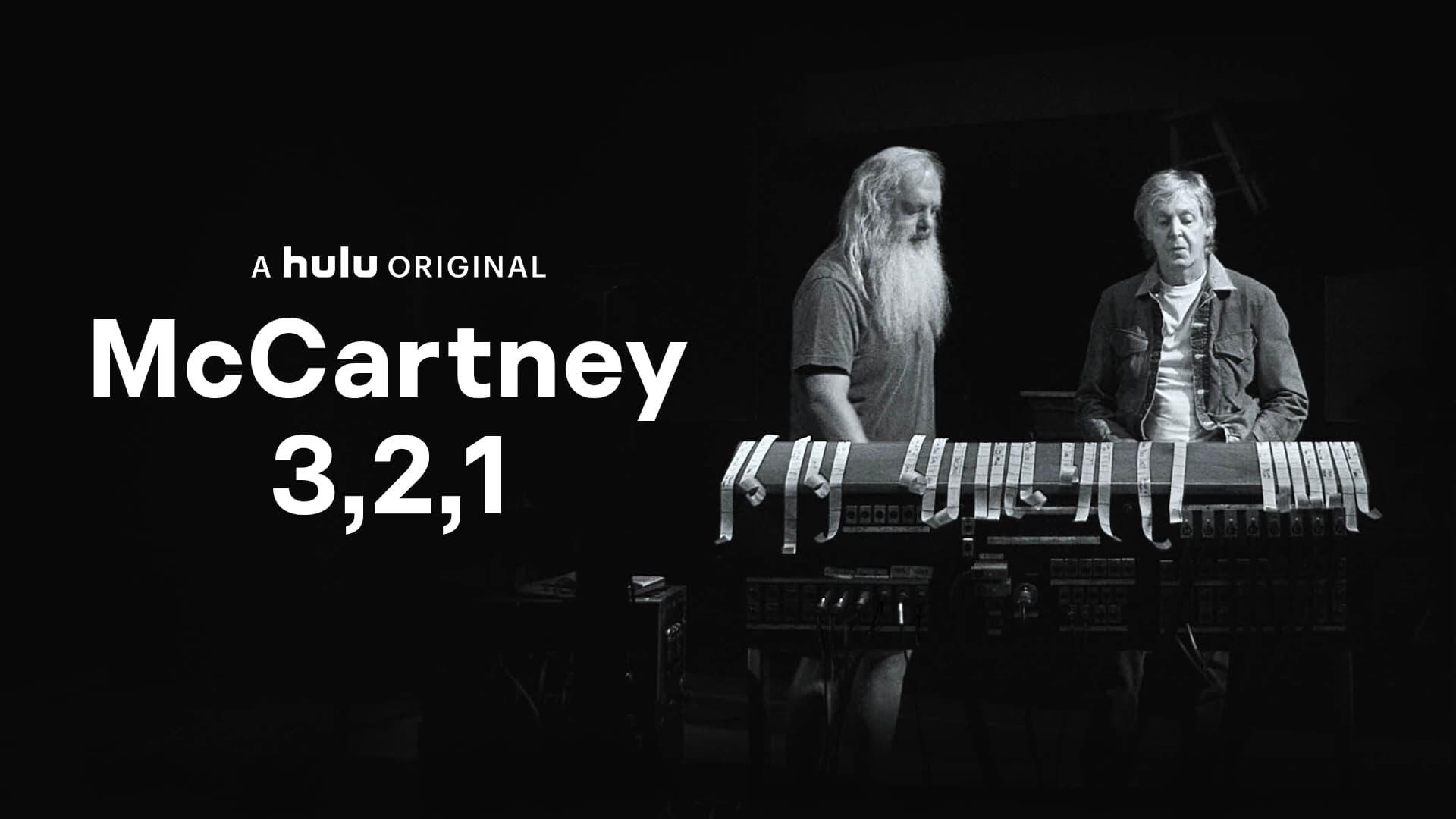 Interviewer Rick Rubin, as seen on Paul's 2021 Hulu documentary series "McCartney 3,2,1," suggested a Celtic influence being displayed on the lead guitar passages. "We're Liverpool boys," McCartney answers, "and they say Liverpool is the capital of Ireland, so it's likely the solo is influenced...You can hear the excitement of us just making stuff up, can't you?" Overdubbed onto track three were John, Paul and George's vocal performances, all with ADT ("Artificial Double Tracking") applied, as well as handclaps from all four Beatles. Track four consisted of Paul's excellent bass work as well as Ringo on tambourine and periodic cymbal crashes and hi-hat splashes in the bridges of the song. Interviewer Rick Rubin, as seen on Paul's 2021 Hulu documentary series "McCartney 3,2,1," suggested a Celtic influence being displayed on the lead guitar passages. "We're Liverpool boys," McCartney answers, "and they say Liverpool is the capital of Ireland, so it's likely the solo is influenced...You can hear the excitement of us just making stuff up, can't you?" Overdubbed onto track three were John, Paul and George's vocal performances, all with ADT ("Artificial Double Tracking") applied, as well as handclaps from all four Beatles. Track four consisted of Paul's excellent bass work as well as Ringo on tambourine and periodic cymbal crashes and hi-hat splashes in the bridges of the song.
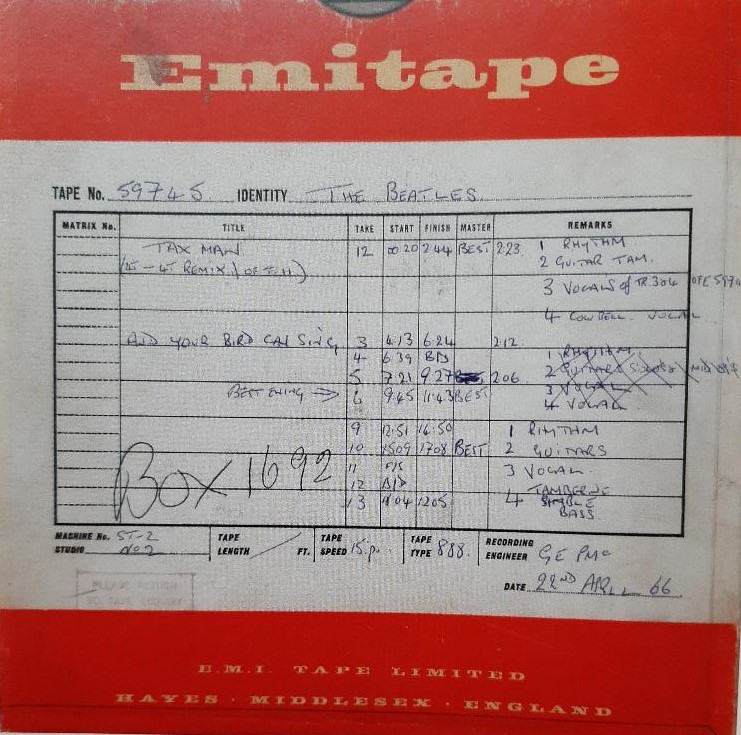 Interestingly, the concluding segment of "take six" was preferred to "take ten," so the word "BEST" was also noted on the official EMI tape box after "take six." This then meant that overdubs also needed to be added to John and Ringo's rhythm track from take one. George and Paul added their dual lead guitar passages onto track two, while Paul's bass and Ringo's tambourine and cymbal performances were then added to track four, track three remaining empty because no vocals were present in the concluding segment of the song. At 2:45 am the next day, the recording of the remake of “And Your Bird Can Sing” was complete, this song being one of only a few "Revolver" tracks not needing a reduction mix for more overdubs to be added. The edit of "take ten" and "take six" wasn't made until the mixing stage, this edit being detected at the 1:34 point on the released recording on the second guitar note of the harmonized lead guitar passage. Interestingly, the concluding segment of "take six" was preferred to "take ten," so the word "BEST" was also noted on the official EMI tape box after "take six." This then meant that overdubs also needed to be added to John and Ringo's rhythm track from take one. George and Paul added their dual lead guitar passages onto track two, while Paul's bass and Ringo's tambourine and cymbal performances were then added to track four, track three remaining empty because no vocals were present in the concluding segment of the song. At 2:45 am the next day, the recording of the remake of “And Your Bird Can Sing” was complete, this song being one of only a few "Revolver" tracks not needing a reduction mix for more overdubs to be added. The edit of "take ten" and "take six" wasn't made until the mixing stage, this edit being detected at the 1:34 point on the released recording on the second guitar note of the harmonized lead guitar passage.
 It’s interesting to note the differences in the arrangement between what was considered the "BEST" version from April 20th, 1966 and the released version as recorded on April 26th, 1966. First to be noted is the key, which is in D major in the first version and raised to E major in the released recording. John's vocals were double-tracked in the first version (or at least attempted to be if it weren't for the giggling), while he's singing single-tracked with ADT in the released version, the vocal harmonies only being heard during strategic portions of the verses instead of throughout the entire verses as on the first version. It’s interesting to note the differences in the arrangement between what was considered the "BEST" version from April 20th, 1966 and the released version as recorded on April 26th, 1966. First to be noted is the key, which is in D major in the first version and raised to E major in the released recording. John's vocals were double-tracked in the first version (or at least attempted to be if it weren't for the giggling), while he's singing single-tracked with ADT in the released version, the vocal harmonies only being heard during strategic portions of the verses instead of throughout the entire verses as on the first version.
 Also, the third verse appeared directly after the first bridge in the first version while it doesn't appear until the conclusion in the released version. The first version also has a "Beatles break" at the end of the last verse, which highlights the last harmonized word “me” followed by an impressive drum fill from Ringo and bass run from Paul. This was omitted in the released version, The Beatles opting instead to just continue the rhythm as usual. The intention was to fade out the first version with the harmonized guitars repeating, while a pre-arranged harmonized guitar passage with a full ending was worked out for the released version. Also, the third verse appeared directly after the first bridge in the first version while it doesn't appear until the conclusion in the released version. The first version also has a "Beatles break" at the end of the last verse, which highlights the last harmonized word “me” followed by an impressive drum fill from Ringo and bass run from Paul. This was omitted in the released version, The Beatles opting instead to just continue the rhythm as usual. The intention was to fade out the first version with the harmonized guitars repeating, while a pre-arranged harmonized guitar passage with a full ending was worked out for the released version.
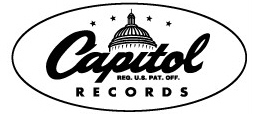 The first mono mix of the song was made on May 12th, 1966 with the sole intention of shipping it directly to Capitol Records in America for inclusion on their make-shift album “Yesterday…And Today.” George Martin, Geoff Emerick and second engineer Jerry Boys entered the control room of EMI Studio Three on this day to create this mix as well as the other two tracks being quickly sent to Capitol, these being “I’m Only Sleeping’ and “Dr. Robert.” A mono mix of "take ten" and the ending of "take six" were made, these then being edited together to make a complete mix. With the harmony guitar passages at full volume during the bridges, this mix was unique to America. The first mono mix of the song was made on May 12th, 1966 with the sole intention of shipping it directly to Capitol Records in America for inclusion on their make-shift album “Yesterday…And Today.” George Martin, Geoff Emerick and second engineer Jerry Boys entered the control room of EMI Studio Three on this day to create this mix as well as the other two tracks being quickly sent to Capitol, these being “I’m Only Sleeping’ and “Dr. Robert.” A mono mix of "take ten" and the ending of "take six" were made, these then being edited together to make a complete mix. With the harmony guitar passages at full volume during the bridges, this mix was unique to America.
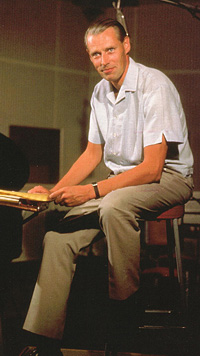 May 20th, 1966 was the day that two stereo mixes of "And Your Bird Can Sing" were created, one intended for the American "Yesterday...And Today" album and the other for the British “Revolver” album. These were made in the control room of EMI Studio One by George Martin, Geoff Emerick and Phil McDonald. Once again, in both cases, separate mixes were first made of "take ten" and then the ending of "take six," these then being edited together to comprise each final stereo mix. For the "Revolver" mix, the guitar harmonies in the bridges were put substantially quieter during the bridges and the ending was faded somewhat quickly so that Paul’s final bass guitar flourish and a stray note on George’s guitar are less prominent as compared to what was heard in the previously created American mono mix. The vocal track was centered in the stereo mix, the bass guitar and tambourine / cymbal / tambourine track was placed primarily on the right channel, while the rhythm track is primarily on the left channel. May 20th, 1966 was the day that two stereo mixes of "And Your Bird Can Sing" were created, one intended for the American "Yesterday...And Today" album and the other for the British “Revolver” album. These were made in the control room of EMI Studio One by George Martin, Geoff Emerick and Phil McDonald. Once again, in both cases, separate mixes were first made of "take ten" and then the ending of "take six," these then being edited together to comprise each final stereo mix. For the "Revolver" mix, the guitar harmonies in the bridges were put substantially quieter during the bridges and the ending was faded somewhat quickly so that Paul’s final bass guitar flourish and a stray note on George’s guitar are less prominent as compared to what was heard in the previously created American mono mix. The vocal track was centered in the stereo mix, the bass guitar and tambourine / cymbal / tambourine track was placed primarily on the right channel, while the rhythm track is primarily on the left channel.
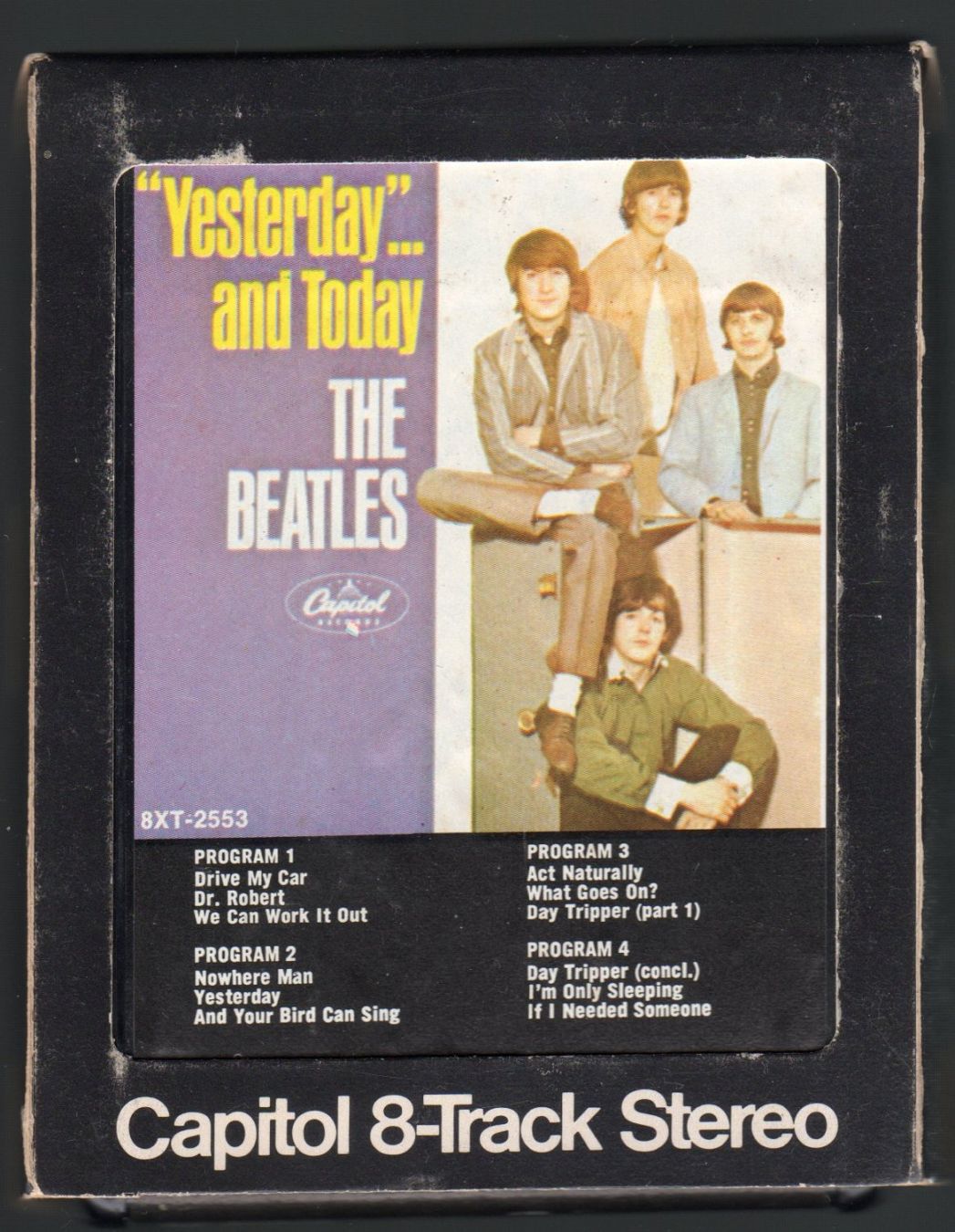 The stereo mix intended for "Yesterday...And Today" arrived at Capitol Records a little too late for their rushed release of the album, the American label already creating a fake-stereo version of the song to appear on stereo pressings of the album, spreading the low to high frequency range of the mono recording from left to right. However, some 4-track, 8-track, reel-to-reel and cassette editions, as well as some later vinyl pressings of the album, did contain this newly created stereo mix as detailed below under "American Releases." Subtle differences are apparent on this mix, such as the dual lead guitar performance during the bridges being louder, as well as a somewhat longer volume fade at the song's conclusion. The stereo mix intended for "Yesterday...And Today" arrived at Capitol Records a little too late for their rushed release of the album, the American label already creating a fake-stereo version of the song to appear on stereo pressings of the album, spreading the low to high frequency range of the mono recording from left to right. However, some 4-track, 8-track, reel-to-reel and cassette editions, as well as some later vinyl pressings of the album, did contain this newly created stereo mix as detailed below under "American Releases." Subtle differences are apparent on this mix, such as the dual lead guitar performance during the bridges being louder, as well as a somewhat longer volume fade at the song's conclusion.
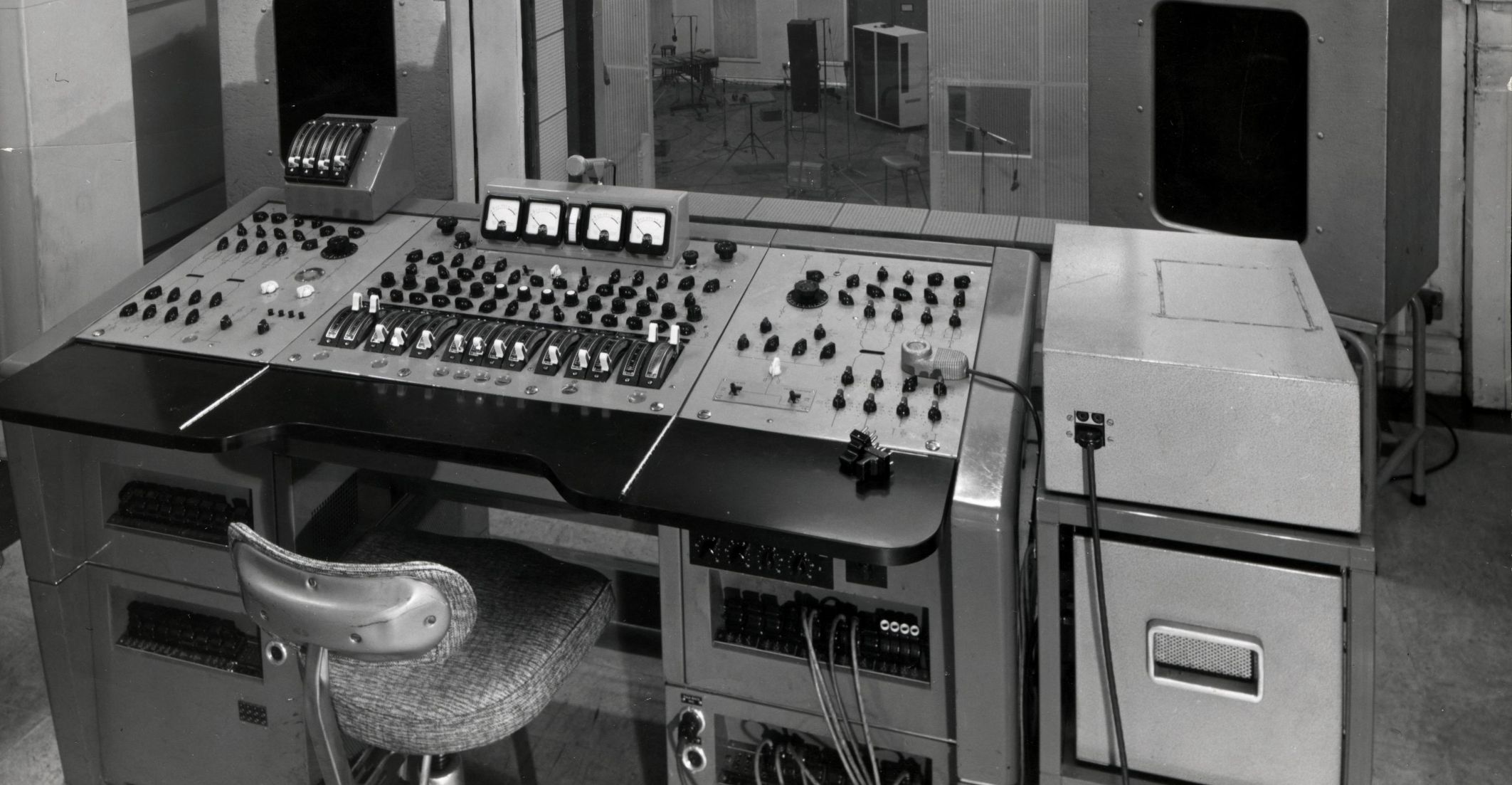 Then on June 6th, 1966, the mono mix that was included on the British “Revolver” album was created in the control room of EMI Studio Three by the same team of George Martin, Geoff Emerick and Phil McDonald. Again, two mixes were done, "take ten" for the majority of the song and "take six" for the ending. However, they neglected to edit the two together on this day, this being done on June 8th, 1966 in the control room of EMI Studio Two by George Martin, Geoff Emerick and 2nd engineer Richard Lush. This time around, the harmony guitars in the bridges are mixed a little louder than in the British stereo mix but not as loud as the American mono mix done on May 12th, 1966. The handclaps are a little quieter here but the conclusion has the bass flourish and stray guitar note in full bloom. Then on June 6th, 1966, the mono mix that was included on the British “Revolver” album was created in the control room of EMI Studio Three by the same team of George Martin, Geoff Emerick and Phil McDonald. Again, two mixes were done, "take ten" for the majority of the song and "take six" for the ending. However, they neglected to edit the two together on this day, this being done on June 8th, 1966 in the control room of EMI Studio Two by George Martin, Geoff Emerick and 2nd engineer Richard Lush. This time around, the harmony guitars in the bridges are mixed a little louder than in the British stereo mix but not as loud as the American mono mix done on May 12th, 1966. The handclaps are a little quieter here but the conclusion has the bass flourish and stray guitar note in full bloom.
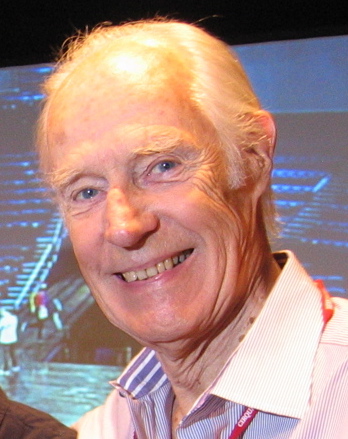 George Martin and Geoff Emerick returned to the original April 20th, 1966 tape in 1995 to create a mix of the first version of "And Your Bird Can Sing." This mix included all four tracks of the four-track tape of "take two," this mix introducing the "giggling" double-tracking vocals of John and Paul to Beatles' fans for the first time on the 1996 "Anthology 2" release. George Martin and Geoff Emerick returned to the original April 20th, 1966 tape in 1995 to create a mix of the first version of "And Your Bird Can Sing." This mix included all four tracks of the four-track tape of "take two," this mix introducing the "giggling" double-tracking vocals of John and Paul to Beatles' fans for the first time on the 1996 "Anthology 2" release.
 Sometime in 2022, George Matin's son Giles Martin, along with engineer Sam Okell, returned to the original April 26th, 1966 four-track tape of "And Your Bird Can Sing" to create a vibrant new stereo mix for inclusion in various editions of the 2022 re-release of "Revolver." While they were at it, as detailed above, they also created new mixes of "take two" from April 20th, with and without the 'giggling vocals,' and the previously unheard "take five" from April 26th, 1966. Sometime in 2022, George Matin's son Giles Martin, along with engineer Sam Okell, returned to the original April 26th, 1966 four-track tape of "And Your Bird Can Sing" to create a vibrant new stereo mix for inclusion in various editions of the 2022 re-release of "Revolver." While they were at it, as detailed above, they also created new mixes of "take two" from April 20th, with and without the 'giggling vocals,' and the previously unheard "take five" from April 26th, 1966.
Song Structure and Style
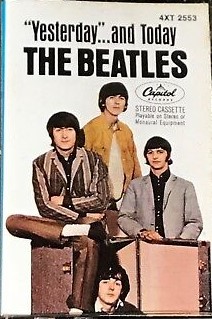 While “And Your Bird Can Sing” was written in the confines of the usual verses and bridges, the positioning of these substantially breaks new ground for the group. In fact, the differences between the first recorded version and the final release show that they felt an overhaul was needed within the structure to make it more unique. In the end, the structure consists of a ‘verse/ verse/ bridge/ verse (solo)/ bridge/ verse/ verse (solo)’ format (or aababaa). A short instrumental intro and conclusion also add to its distinctiveness. While “And Your Bird Can Sing” was written in the confines of the usual verses and bridges, the positioning of these substantially breaks new ground for the group. In fact, the differences between the first recorded version and the final release show that they felt an overhaul was needed within the structure to make it more unique. In the end, the structure consists of a ‘verse/ verse/ bridge/ verse (solo)/ bridge/ verse/ verse (solo)’ format (or aababaa). A short instrumental intro and conclusion also add to its distinctiveness.
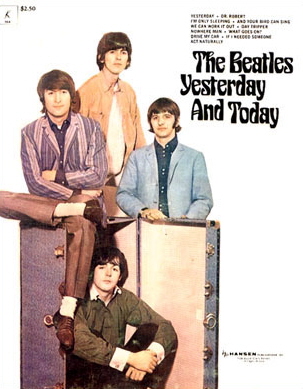 The introduction is four measures long and stays put in the home key of E major, the full band crashing in on the one-beat. The main focus of the introduction, as could arguably be said about the entire song, is the classical / baroque-sounding harmonized guitar work of George and Paul which winds up and down the scale and is mostly played in eighth notes. This is actually just the first half of the guitar solo which we’ll hear twice later in the song. Being as proud as they were of this feature of the song, they preview it here as a taste of the magic that will appear later. The guitar riff ends with a stunning syncopated rising-and-falling trill which we’ll also hear a few measures later. The last measure of this intro also introduces the tambourine which, as is apparent as the song progresses, is played in a somewhat undecided pattern that periodically changes, due possibly to being played by Lennon who doesn’t pick up a percussion instrument very often. The introduction is four measures long and stays put in the home key of E major, the full band crashing in on the one-beat. The main focus of the introduction, as could arguably be said about the entire song, is the classical / baroque-sounding harmonized guitar work of George and Paul which winds up and down the scale and is mostly played in eighth notes. This is actually just the first half of the guitar solo which we’ll hear twice later in the song. Being as proud as they were of this feature of the song, they preview it here as a taste of the magic that will appear later. The guitar riff ends with a stunning syncopated rising-and-falling trill which we’ll also hear a few measures later. The last measure of this intro also introduces the tambourine which, as is apparent as the song progresses, is played in a somewhat undecided pattern that periodically changes, due possibly to being played by Lennon who doesn’t pick up a percussion instrument very often.
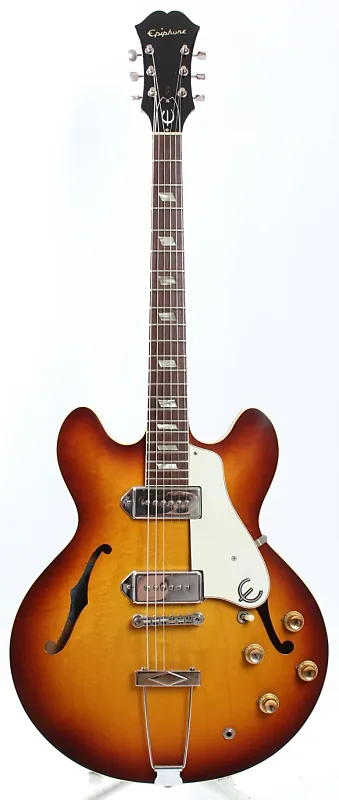 The eight-measure first verse is an uncovering of what is underneath the showcased winding lead guitar work of the introduction, as if peeling away the outer layer of an onion. What is revealed underneath is a somewhat clunky Lennon rhythm guitar pattern that is played mostly in quarter notes and accentuated by Ringo’s simple rock drum pattern and Paul’s detailed bass work. However, John’s ADT treated lead vocals appear which take center stage just as the winding lead guitars of the intro disappear from view. The vocal pattern to the first two measures of each of the three verses differ, this one being sung mostly on a single note in a somewhat rushed pattern with the words “tell me that you’ve got everything you want.” The eight-measure first verse is an uncovering of what is underneath the showcased winding lead guitar work of the introduction, as if peeling away the outer layer of an onion. What is revealed underneath is a somewhat clunky Lennon rhythm guitar pattern that is played mostly in quarter notes and accentuated by Ringo’s simple rock drum pattern and Paul’s detailed bass work. However, John’s ADT treated lead vocals appear which take center stage just as the winding lead guitars of the intro disappear from view. The vocal pattern to the first two measures of each of the three verses differ, this one being sung mostly on a single note in a somewhat rushed pattern with the words “tell me that you’ve got everything you want.”
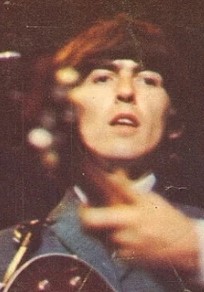 Instead of the harmonized singing throughout the verses like the first recorded version, Paul and George chime in only on the song's title and the final emphasized “me” in the seventh measure. Another interesting feature of the first verse is the repeat of the syncopated ending guitar trill we just heard in the introduction. This is undoubtedly added to fill in the silence in the melody line during the eighth measure. Instead of the harmonized singing throughout the verses like the first recorded version, Paul and George chime in only on the song's title and the final emphasized “me” in the seventh measure. Another interesting feature of the first verse is the repeat of the syncopated ending guitar trill we just heard in the introduction. This is undoubtedly added to fill in the silence in the melody line during the eighth measure.
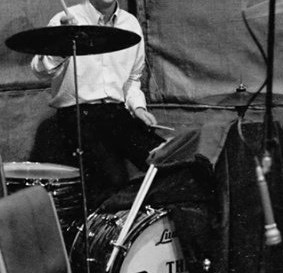 The second eight-measure verse is nearly identical in format with a few exceptions. The melody line of the first two measures is sung in strict quarter notes this time around with the words “you say you’ve seen seven wonders.” Also, since the harmony guitar leads will be appearing immediately in the following bridge, the eighth measure remains somewhat naked in anticipation of what will follow. The first overdubbed cymbal crash is heard on the downbeat of the seventh measure just before the harmonized lyric “me.” The second eight-measure verse is nearly identical in format with a few exceptions. The melody line of the first two measures is sung in strict quarter notes this time around with the words “you say you’ve seen seven wonders.” Also, since the harmony guitar leads will be appearing immediately in the following bridge, the eighth measure remains somewhat naked in anticipation of what will follow. The first overdubbed cymbal crash is heard on the downbeat of the seventh measure just before the harmonized lyric “me.”
 The first bridge is next heard which is also eight measures long and is sung solo by Lennon throughout. As a backdrop, an impressive rising-and-falling arpeggiated dual guitar lead is continually heard throughout the entire bridge, which is strategically adjusting with the chord changes. Other added elements in the bridge are handclaps and overdubbed hi-hat splashes in each measure. The first bridge is next heard which is also eight measures long and is sung solo by Lennon throughout. As a backdrop, an impressive rising-and-falling arpeggiated dual guitar lead is continually heard throughout the entire bridge, which is strategically adjusting with the chord changes. Other added elements in the bridge are handclaps and overdubbed hi-hat splashes in each measure.
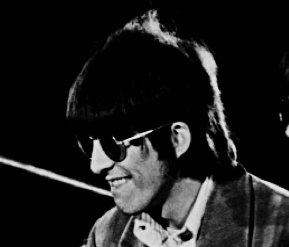 Instead of jumping into the third vocal verse as had been done in their first version, they decide to omit this and go right into the guitar solo, which is played against the chord pattern of the verse. Well, almost, anyway. The chord played in the sixth measure of the bridge is a B7 instead of an A as heard in the verses, probably changed to accommodate the guitar leads that accompany this section of the song. The winding dual guitar leads of the intro are identically repeated in the first four measures while an excellently crafted dual run was written for the final four measures that rise quite high and then quickly fall back down in the final measure. (Awkwardly, the similar guitar work in the first recorded version jumps up high and then stays there, so this was something they obviously knew should be changed for the released version.) Instead of jumping into the third vocal verse as had been done in their first version, they decide to omit this and go right into the guitar solo, which is played against the chord pattern of the verse. Well, almost, anyway. The chord played in the sixth measure of the bridge is a B7 instead of an A as heard in the verses, probably changed to accommodate the guitar leads that accompany this section of the song. The winding dual guitar leads of the intro are identically repeated in the first four measures while an excellently crafted dual run was written for the final four measures that rise quite high and then quickly fall back down in the final measure. (Awkwardly, the similar guitar work in the first recorded version jumps up high and then stays there, so this was something they obviously knew should be changed for the released version.)
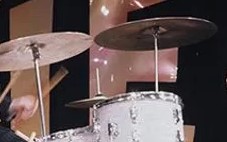 One final element of the guitar solo to mention here is the assumingly misplaced overdubbed cymbal crash on the second beat of the first measure. If it was played simultaneously with Ringo’s drums on the rhythm track, he no doubt would have crashed the cymbal on the downbeat as he habitually had done throughout The Beatles cannon. But, because it was overdubbed, and possibly because it would have interfered with an edit on an available track, this crash was performed where it was. Or maybe Ringo was just a little late. :-) One final element of the guitar solo to mention here is the assumingly misplaced overdubbed cymbal crash on the second beat of the first measure. If it was played simultaneously with Ringo’s drums on the rhythm track, he no doubt would have crashed the cymbal on the downbeat as he habitually had done throughout The Beatles cannon. But, because it was overdubbed, and possibly because it would have interfered with an edit on an available track, this crash was performed where it was. Or maybe Ringo was just a little late. :-)
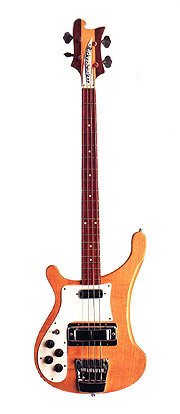 After a structurally identical second bridge, the third verse finally appears which is also eight measures in length. This begins with another overdubbed cymbal crash which, this time, comes in slightly early which gives the impression that an edit occurred when there apparently wasn’t one. The first two measures of this verse differ even more than the first two by featuring three part harmony on the words “tell me that you’ve heard every sound there is.” The bass pattern Paul uses here actually gives the impression of a changed chord pattern for these measures instead of just remaining on the E chord. John, while being slightly out of his range, attempts an interesting warble on the phrase “hear me” in order to mix things up even a little more. After a structurally identical second bridge, the third verse finally appears which is also eight measures in length. This begins with another overdubbed cymbal crash which, this time, comes in slightly early which gives the impression that an edit occurred when there apparently wasn’t one. The first two measures of this verse differ even more than the first two by featuring three part harmony on the words “tell me that you’ve heard every sound there is.” The bass pattern Paul uses here actually gives the impression of a changed chord pattern for these measures instead of just remaining on the E chord. John, while being slightly out of his range, attempts an interesting warble on the phrase “hear me” in order to mix things up even a little more.
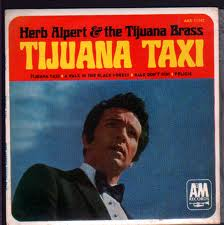 The Beatles then decide to perform a complete repeat of the delicious eight-measure guitar solo complete with the high register ending and falling conclusion. This section begins with another overdubbed cymbal crash which, this time, hits the perfect mark on the downbeat. (Practice makes perfect.) They then tease us by following this solo with what appears to be another guitar solo but is, in essence, a three-times repetition of the first measure of the guitar solo. Each phrase begins with a distinctive single low-guitar note which resembles, to my ears anyway, a silly bicycle horn somewhat reminiscent to what’s heard at the end of Herb Alpert’s “Tijuana Taxi.” The Beatles then decide to perform a complete repeat of the delicious eight-measure guitar solo complete with the high register ending and falling conclusion. This section begins with another overdubbed cymbal crash which, this time, hits the perfect mark on the downbeat. (Practice makes perfect.) They then tease us by following this solo with what appears to be another guitar solo but is, in essence, a three-times repetition of the first measure of the guitar solo. Each phrase begins with a distinctive single low-guitar note which resembles, to my ears anyway, a silly bicycle horn somewhat reminiscent to what’s heard at the end of Herb Alpert’s “Tijuana Taxi.”
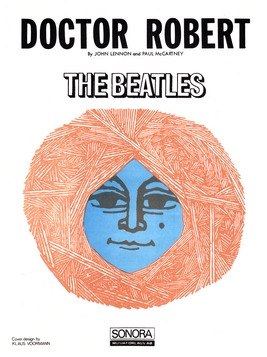 After these three teasing guitar riffs are complete, the song ends on an unresolving A major chord. Ending a song in this way seemed to be the latest trick in The Beatles' bag, both “Dr. Robert” and “For No One” from their album "Revolver" concluding in a similar unresolving fashion. After these three teasing guitar riffs are complete, the song ends on an unresolving A major chord. Ending a song in this way seemed to be the latest trick in The Beatles' bag, both “Dr. Robert” and “For No One” from their album "Revolver" concluding in a similar unresolving fashion.
Instrumentally, "And Your Bird Can Sing" ends with a cymbal crash from Ringo that was performed on the actual rhythm track, while Paul’s bass flails away as if performing "morse code" on a single note while a subtle stray guitar note is heard in the fade out.
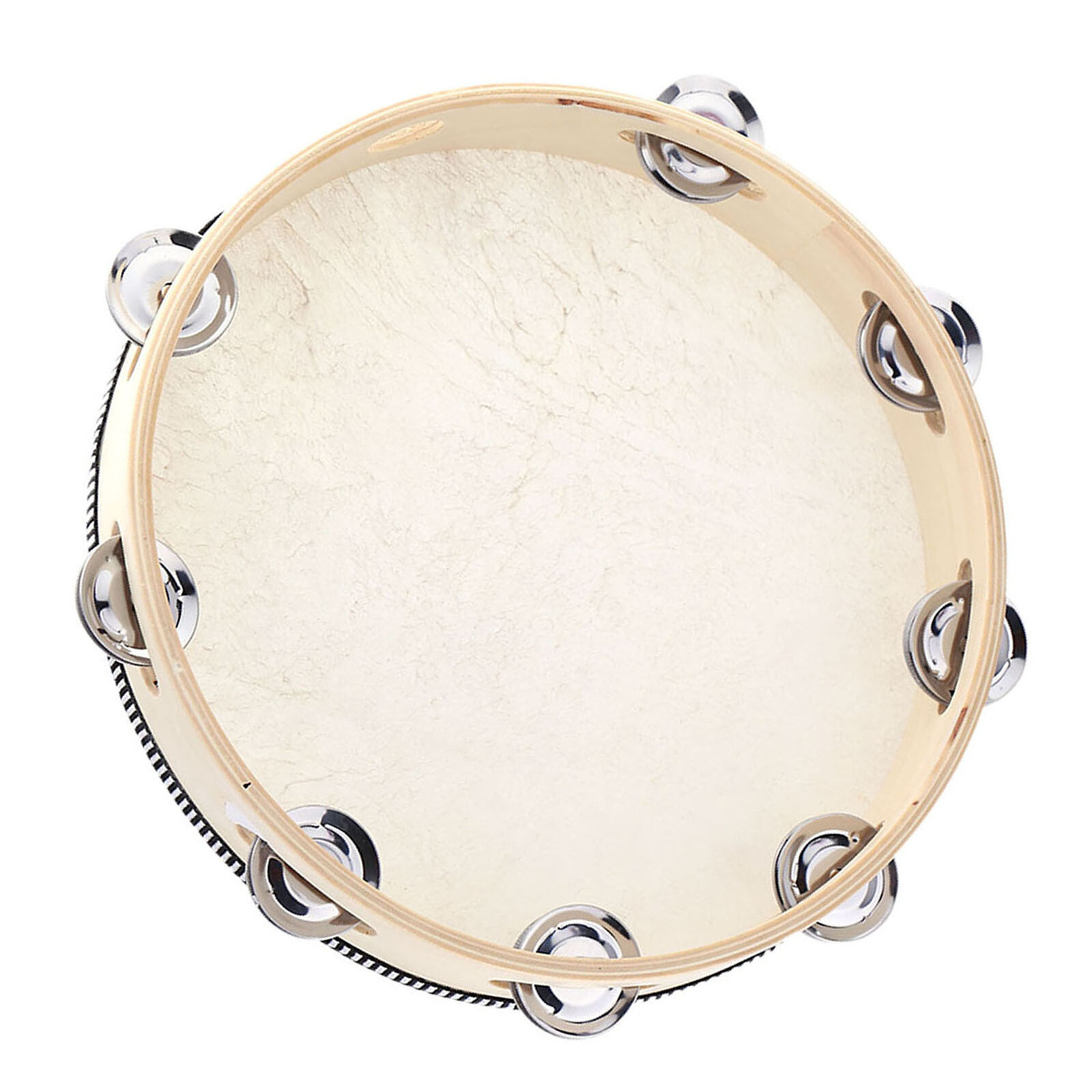 John Lennon’s lead vocal work is sung in a rather dry and abrasive manner which is suitable to the song’s somewhat dirty-sounding delivery. His electric rhythm guitar may be rudimentary but its placement loud in the mix makes its appearance known. His apparent tambourine playing is erratic but nicely done. It is obvious that this is John’s platform and no one could ever infer otherwise. John Lennon’s lead vocal work is sung in a rather dry and abrasive manner which is suitable to the song’s somewhat dirty-sounding delivery. His electric rhythm guitar may be rudimentary but its placement loud in the mix makes its appearance known. His apparent tambourine playing is erratic but nicely done. It is obvious that this is John’s platform and no one could ever infer otherwise.
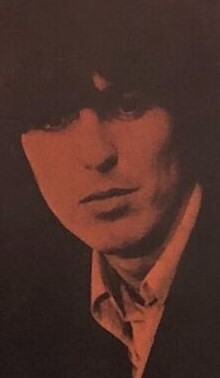 George plays an impressive role as lead guitarist and his understandable pride in this song, as mentioned earlier, was detailed in interview. His supporting vocal harmonies are also "spot on." Paul is also quite impressively busy on this track, playing intricate walking bass lines and then adding a guitar harmony to George’s flowing guitar leads with much finesse. His harmony vocals are stunning as always expected from him. Ringo doesn’t add any fills to the rhythm track as he had done in the first recording (which was quite impressive) but adds little subtle touches as overdubs to sweeten the arrangement. George plays an impressive role as lead guitarist and his understandable pride in this song, as mentioned earlier, was detailed in interview. His supporting vocal harmonies are also "spot on." Paul is also quite impressively busy on this track, playing intricate walking bass lines and then adding a guitar harmony to George’s flowing guitar leads with much finesse. His harmony vocals are stunning as always expected from him. Ringo doesn’t add any fills to the rhythm track as he had done in the first recording (which was quite impressive) but adds little subtle touches as overdubs to sweeten the arrangement.
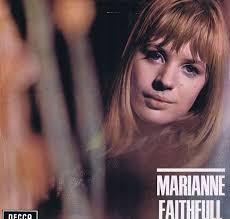 Delving into the meaning of the lyrics can be a tough assignment and is subject to personal interpretation since John (or Paul) never thought to explain them. Opinions vary and have circulated among Beatles fans to the point of being viewed as fact, such as the “bird” being Mick Jagger’s then girlfriend Marianne Faithfull (the opinion apparently deriving from journalist Richard Simpson). Another story is that John was miffed about a recent magazine article in Esquire about Frank Sinatra being able to afford "anything he wants," Frank also putting down The Beatles' talent in the article. The crooner repeatedly uses the word "bird" during this interview, the inference being the male sex organ. Since both John and Paul have been openly honest about lyric meanings, both of these stories seem unlikely. Delving into the meaning of the lyrics can be a tough assignment and is subject to personal interpretation since John (or Paul) never thought to explain them. Opinions vary and have circulated among Beatles fans to the point of being viewed as fact, such as the “bird” being Mick Jagger’s then girlfriend Marianne Faithfull (the opinion apparently deriving from journalist Richard Simpson). Another story is that John was miffed about a recent magazine article in Esquire about Frank Sinatra being able to afford "anything he wants," Frank also putting down The Beatles' talent in the article. The crooner repeatedly uses the word "bird" during this interview, the inference being the male sex organ. Since both John and Paul have been openly honest about lyric meanings, both of these stories seem unlikely.
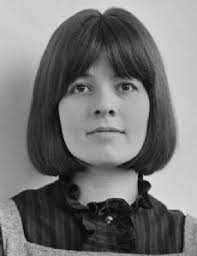 The best way to decipher some substance to “And Your Bird Can Sing,” I feel, is to examine where John’s head was at during the time the song was written. On March 4th, 1966, a journalist friend of the Lennon’s, Maureen Cleave, conducted an interview with the Beatle, this first being published in the “London Evening Standard.” While John’s comment in this article about The Beatles being “more popular than Jesus” is what caught the most attention, his views on materialism were quite telling, the substance of which appears to rear its head into the song in question. The best way to decipher some substance to “And Your Bird Can Sing,” I feel, is to examine where John’s head was at during the time the song was written. On March 4th, 1966, a journalist friend of the Lennon’s, Maureen Cleave, conducted an interview with the Beatle, this first being published in the “London Evening Standard.” While John’s comment in this article about The Beatles being “more popular than Jesus” is what caught the most attention, his views on materialism were quite telling, the substance of which appears to rear its head into the song in question.
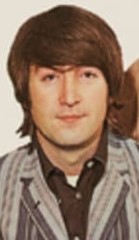 “Famous and loaded as I am,” John relates in this interview, “I still have to meet soft people. It often comes into my mind that I’m not really rich. There are really rich people but I don’t know where they are.” The article also mentions many of John’s “prized possessions” that he has displayed in his Weybridge home, such as a suit of armor named “Sidney,” a room full of model racing cars that he’d lost interest in, a swimming pool, a Rolls Royce (with a television, folding bed, refrigerator and telephone installed inside), a huge alter crucifix, and a gorilla suit (“That’s the only suit that fits me”). Maureen Cleave states in the article: “One feels that his possessions – to which he adds daily – have got the upper hand.” “Famous and loaded as I am,” John relates in this interview, “I still have to meet soft people. It often comes into my mind that I’m not really rich. There are really rich people but I don’t know where they are.” The article also mentions many of John’s “prized possessions” that he has displayed in his Weybridge home, such as a suit of armor named “Sidney,” a room full of model racing cars that he’d lost interest in, a swimming pool, a Rolls Royce (with a television, folding bed, refrigerator and telephone installed inside), a huge alter crucifix, and a gorilla suit (“That’s the only suit that fits me”). Maureen Cleave states in the article: “One feels that his possessions – to which he adds daily – have got the upper hand.”
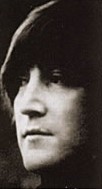 With this in mind, the lyrics of “And Your Bird Can Sing” could be interpreted as follows: Disguised as a love song, John addresses a well-to-do female with the statement “You tell me that you’ve got everything you want…” And then, in a sarcastic or hyperbolic “all this and heaven too” tone, Lennon continues “…and your bird can sing” as if to infer that there is nothing on this earth that she couldn’t acquire for herself. His point is then made clear by stating “you don’t get me,” ‘getting’ referring to understanding. With this in mind, the lyrics of “And Your Bird Can Sing” could be interpreted as follows: Disguised as a love song, John addresses a well-to-do female with the statement “You tell me that you’ve got everything you want…” And then, in a sarcastic or hyperbolic “all this and heaven too” tone, Lennon continues “…and your bird can sing” as if to infer that there is nothing on this earth that she couldn’t acquire for herself. His point is then made clear by stating “you don’t get me,” ‘getting’ referring to understanding.
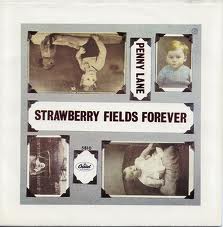 In fact, the real life 1966 John Lennon was someone that most people didn’t “get,” something that the writer touched on later that year in the song "Strawberry Fields Forever" with lyics such as "No one, I think, is in my tree...that is, you can't, you know, tune in, but it's alright." Maureen Cleave herself describes him in the above article as “unpredictable, indolent, disorganized, childish, vague, charming, and quick-witted.” In fact, the real life 1966 John Lennon was someone that most people didn’t “get,” something that the writer touched on later that year in the song "Strawberry Fields Forever" with lyics such as "No one, I think, is in my tree...that is, you can't, you know, tune in, but it's alright." Maureen Cleave herself describes him in the above article as “unpredictable, indolent, disorganized, childish, vague, charming, and quick-witted.”
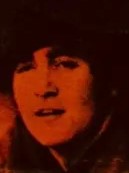 The second verse continues this same line of reasoning but this time focusing on what the woman had "seen" rather than acquired. She had “seen seven wonders,” no doubt referring to the seven wonders of the world, then extravagantly and sarcastically continuing the statement with “…and your bird is green,” which probably is no more significant than the color green being something that also can be seen. The thought is then appropriately concluded with “you can’t see me,” suggesting his being unattainable for her. The second verse continues this same line of reasoning but this time focusing on what the woman had "seen" rather than acquired. She had “seen seven wonders,” no doubt referring to the seven wonders of the world, then extravagantly and sarcastically continuing the statement with “…and your bird is green,” which probably is no more significant than the color green being something that also can be seen. The thought is then appropriately concluded with “you can’t see me,” suggesting his being unattainable for her.
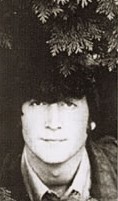 Putting things in a nutshell, the first bridge has John instructing her to look in his “direction” whenever her “prized possessions” begin to ‘weigh her down.’ “I’ll be ‘round,” he assures as a hopeful suitor would. The second bridge seems to suggest that at a future time, when her bird is "broken," meaning that her possessions will eventually break down or be unusuable, she may be "awoken" to the fact that her material things can't forever satisfiy her. Those broken possessions will "bring you down," the singer suggests. But, not to fear, because John will still be there for her. "I'll be 'round," he reminds her. Putting things in a nutshell, the first bridge has John instructing her to look in his “direction” whenever her “prized possessions” begin to ‘weigh her down.’ “I’ll be ‘round,” he assures as a hopeful suitor would. The second bridge seems to suggest that at a future time, when her bird is "broken," meaning that her possessions will eventually break down or be unusuable, she may be "awoken" to the fact that her material things can't forever satisfiy her. Those broken possessions will "bring you down," the singer suggests. But, not to fear, because John will still be there for her. "I'll be 'round," he reminds her.
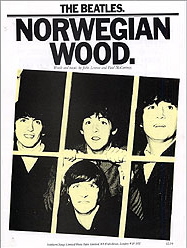 The last verse continues the pattern of the first two but this time in the category of hearing. The woman has “heard every sound there is” but she can’t “hear” John. Curiously, the current hyperbolic reference to the bird shows that it “can swing,” possibly a reference to dancing to music. Whether this interpretation is accurate to what John meant or not (some suggesting that the British interpretation of the word "bird" means a woman, which is what John meant in "Norwegian Wood (This Bird Has Flown"), it's quite possible that the multi-interpretational lyrics of "And Your Bird Can Sing" were the reason why John and Paul fell into a fit of laughter during the recording of the first recorded version of the song. The last verse continues the pattern of the first two but this time in the category of hearing. The woman has “heard every sound there is” but she can’t “hear” John. Curiously, the current hyperbolic reference to the bird shows that it “can swing,” possibly a reference to dancing to music. Whether this interpretation is accurate to what John meant or not (some suggesting that the British interpretation of the word "bird" means a woman, which is what John meant in "Norwegian Wood (This Bird Has Flown"), it's quite possible that the multi-interpretational lyrics of "And Your Bird Can Sing" were the reason why John and Paul fell into a fit of laughter during the recording of the first recorded version of the song.
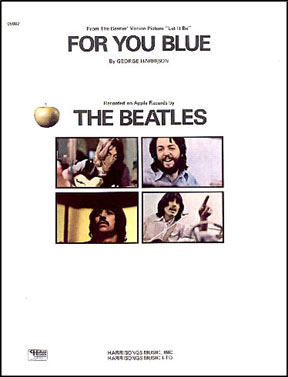 One thing we can determine with certainty is that the title phrase “and your bird can sing” actually only appears once in the song, something that was quite unheard of for Beatles compositions in their earlier years. With the progression and maturity of their musical output from this point on, there were even occasions where the song's title wouldn't appear in its lyrics at all, such as with "Love You To," "A Day In The Life," "Tomorrow Never Knows," “Yer Blues” and “For You Blue.” One thing we can determine with certainty is that the title phrase “and your bird can sing” actually only appears once in the song, something that was quite unheard of for Beatles compositions in their earlier years. With the progression and maturity of their musical output from this point on, there were even occasions where the song's title wouldn't appear in its lyrics at all, such as with "Love You To," "A Day In The Life," "Tomorrow Never Knows," “Yer Blues” and “For You Blue.”
American Releases
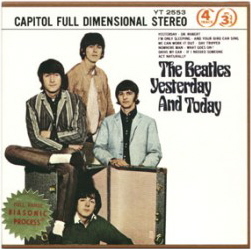 On June 20th, 1966, about seven weeks before Britain, “And Your Bird Can Sing” was premiered in the US as an album track on the make-shift Capitol release “Yesterday…And Today.” In an effort to get the album released as soon as possible, the earlier received mono mix was given a “duophonic stereo” treatment by the label for the stereo copies of the album at that time. However, the stereo albums produced for the Capitol Record Club from 1969 onward began to use the stereo mixes later supplied by EMI. So did all of the tape versions of the album, such as cassette, 8-track, 4-track and reel-to-reel. Also, the albums printed at the Winchester plant from 1973 onward had a true stereo mix of the song. But the general release of most of the albums throughout its history until the end of the record era in 1988 still contained the “duophonic stereo” mix. On June 20th, 1966, about seven weeks before Britain, “And Your Bird Can Sing” was premiered in the US as an album track on the make-shift Capitol release “Yesterday…And Today.” In an effort to get the album released as soon as possible, the earlier received mono mix was given a “duophonic stereo” treatment by the label for the stereo copies of the album at that time. However, the stereo albums produced for the Capitol Record Club from 1969 onward began to use the stereo mixes later supplied by EMI. So did all of the tape versions of the album, such as cassette, 8-track, 4-track and reel-to-reel. Also, the albums printed at the Winchester plant from 1973 onward had a true stereo mix of the song. But the general release of most of the albums throughout its history until the end of the record era in 1988 still contained the “duophonic stereo” mix.
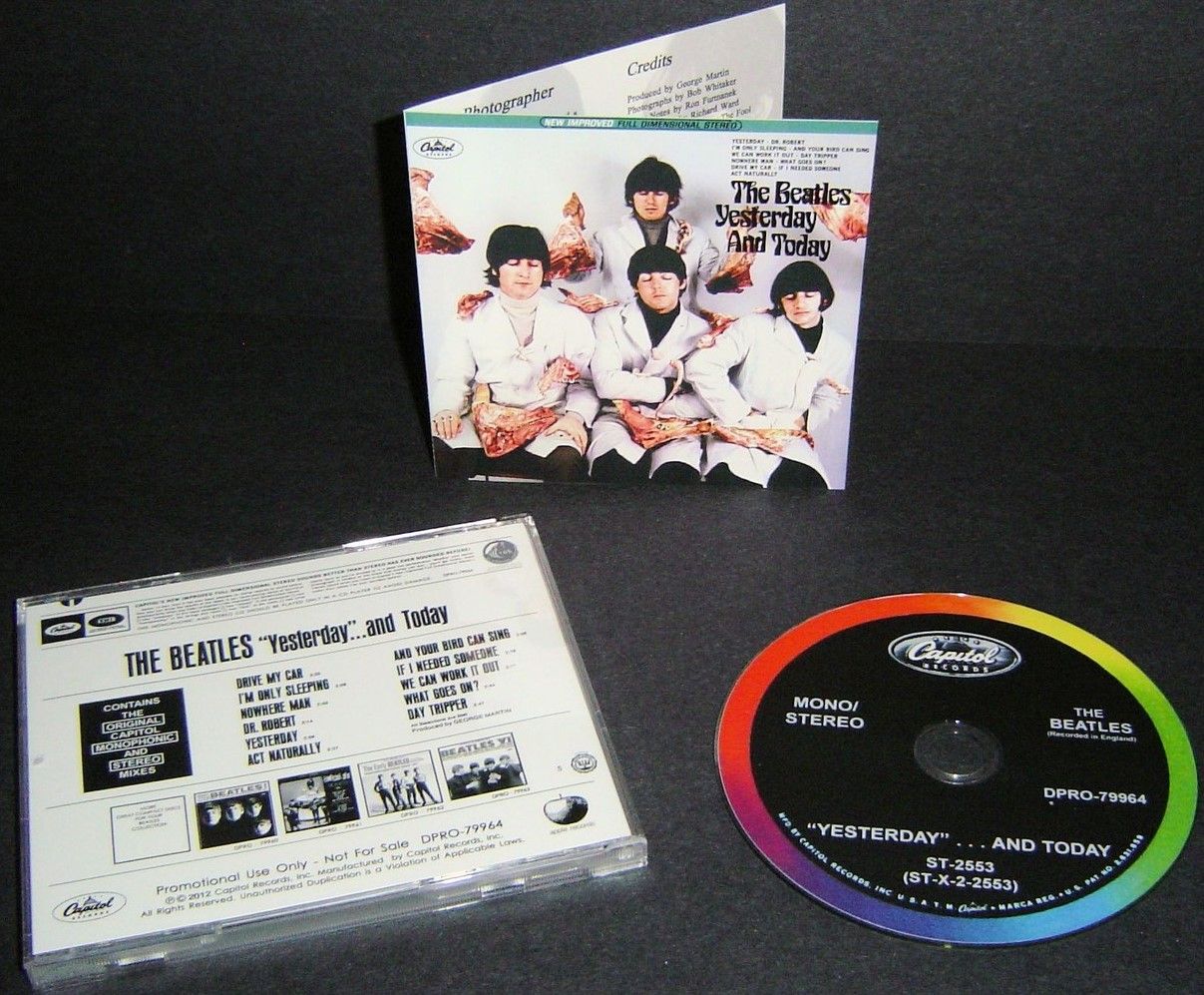 "Yesterday...And Today" was then released on January 21st, 2014, as an individual compact disc, both the mono and stereo versions of the album being included on a single CD. The original mono mix of the song that appeared on the vinyl album is featured here, but they decided to use the later British mix for the stereo version of the song. Incidentally, this release featured both the "trunk" cover and the "butcher" cover. "Yesterday...And Today" was then released on January 21st, 2014, as an individual compact disc, both the mono and stereo versions of the album being included on a single CD. The original mono mix of the song that appeared on the vinyl album is featured here, but they decided to use the later British mix for the stereo version of the song. Incidentally, this release featured both the "trunk" cover and the "butcher" cover.
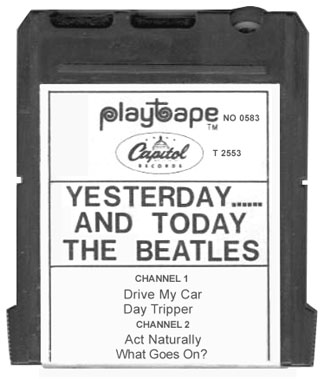 Sometime in 1967, Capitol released Beatles music on a brand new but short-lived format called "Playtapes." These tape cartridges did not have the capability to include entire albums, so two truncated four-song versions of "Yesterday...And Today" were released in this portable format, "And Your Bird Can Sing" being on one of them. These "Playtapes" are highly collectable today. Sometime in 1967, Capitol released Beatles music on a brand new but short-lived format called "Playtapes." These tape cartridges did not have the capability to include entire albums, so two truncated four-song versions of "Yesterday...And Today" were released in this portable format, "And Your Bird Can Sing" being on one of them. These "Playtapes" are highly collectable today.
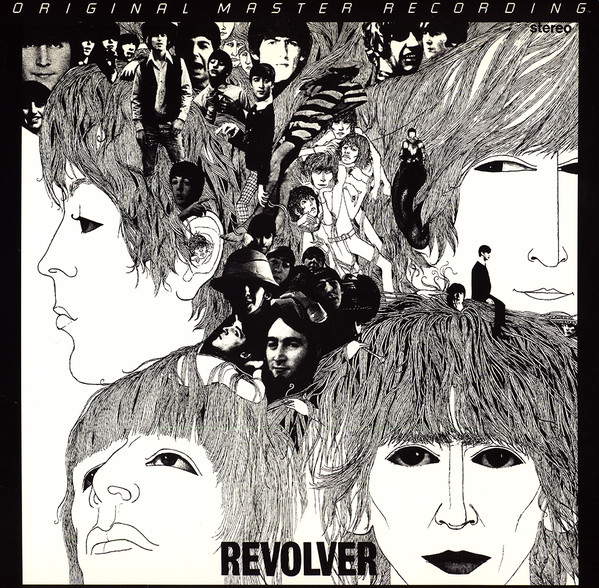 The first time the original British "Revolver” album was made available in the US was the "Original Master Recording" vinyl edition released through Mobile Fidelity Sound Lab sometime in 1985. This album included "And Your Bird Can Sing" and was prepared utilizing half-speed mastering technology from the original master tape on loan from EMI. This version of the album was only available for a short time and is quite collectible today. The first time the original British "Revolver” album was made available in the US was the "Original Master Recording" vinyl edition released through Mobile Fidelity Sound Lab sometime in 1985. This album included "And Your Bird Can Sing" and was prepared utilizing half-speed mastering technology from the original master tape on loan from EMI. This version of the album was only available for a short time and is quite collectible today.
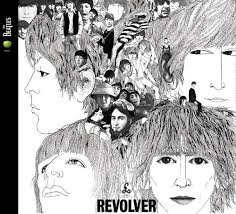 The fourteen-track British “Revolver” album was released on compact disc on April 30th, 1987, a US vinyl edition coming out on October 24th, 1988. A remastered version of the CD was then re-released on CD on September 9th, 2009 and on vinyl on November 13th, 2012. A remarkable newly mixed edition of "Revolver" created by Giles Martin was released on vinyl and CD on October 28th, 2022. The fourteen-track British “Revolver” album was released on compact disc on April 30th, 1987, a US vinyl edition coming out on October 24th, 1988. A remastered version of the CD was then re-released on CD on September 9th, 2009 and on vinyl on November 13th, 2012. A remarkable newly mixed edition of "Revolver" created by Giles Martin was released on vinyl and CD on October 28th, 2022.
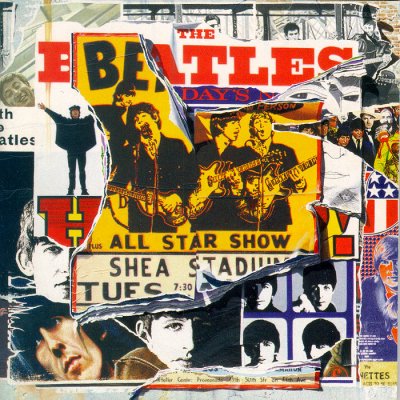 On March 18th, 1996, the highly anticipated “Anthology 2” CD set was released, which contained the April 20th, 1966 version of the song complete with its “giggling” vocal overdub. In 1995, Paul commented on the inclusion of this track: “One of my favorites on the ‘Anthology’ is ‘And Your Bird Can Sing,’ which is a nice song, but this take of it was one we couldn’t use at the time. John and I got a fit of the giggles while we were doing the double-track.” On March 18th, 1996, the highly anticipated “Anthology 2” CD set was released, which contained the April 20th, 1966 version of the song complete with its “giggling” vocal overdub. In 1995, Paul commented on the inclusion of this track: “One of my favorites on the ‘Anthology’ is ‘And Your Bird Can Sing,’ which is a nice song, but this take of it was one we couldn’t use at the time. John and I got a fit of the giggles while we were doing the double-track.”
 September 9th, 2009 saw the release of the CD box set “The Beatles In Mono.” This set included the British mono mix of “And Your Bird Can Sing." Also released on September 9th, 2009, in promotion of the remastered Beatles catalog, the "09.09.09 Sampler" was distributed out to retailers and radio programmers, this mono mix of "And Your Bird Can Sing" being featured therein. The vinyl edition of this new box set was first released on September 9th, 2014. September 9th, 2009 saw the release of the CD box set “The Beatles In Mono.” This set included the British mono mix of “And Your Bird Can Sing." Also released on September 9th, 2009, in promotion of the remastered Beatles catalog, the "09.09.09 Sampler" was distributed out to retailers and radio programmers, this mono mix of "And Your Bird Can Sing" being featured therein. The vinyl edition of this new box set was first released on September 9th, 2014.
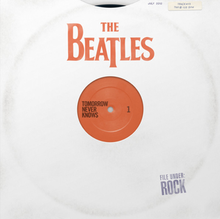 On July 24th, 2012, the iTunes Store, in partnership with EMI Records, released a Beatles compilation album entitled "Tomorrow Never Knows," the purpose of which was to highlight the group's influence on the history of rock music. The album had the approval of Paul and Ringo, as well as the board of directors for the estates of John and George, and was successful enough to peak at #24 on the Billboard album chart. "And Your Bird Can Sing" fit in nicely on this release. On July 24th, 2012, the iTunes Store, in partnership with EMI Records, released a Beatles compilation album entitled "Tomorrow Never Knows," the purpose of which was to highlight the group's influence on the history of rock music. The album had the approval of Paul and Ringo, as well as the board of directors for the estates of John and George, and was successful enough to peak at #24 on the Billboard album chart. "And Your Bird Can Sing" fit in nicely on this release.
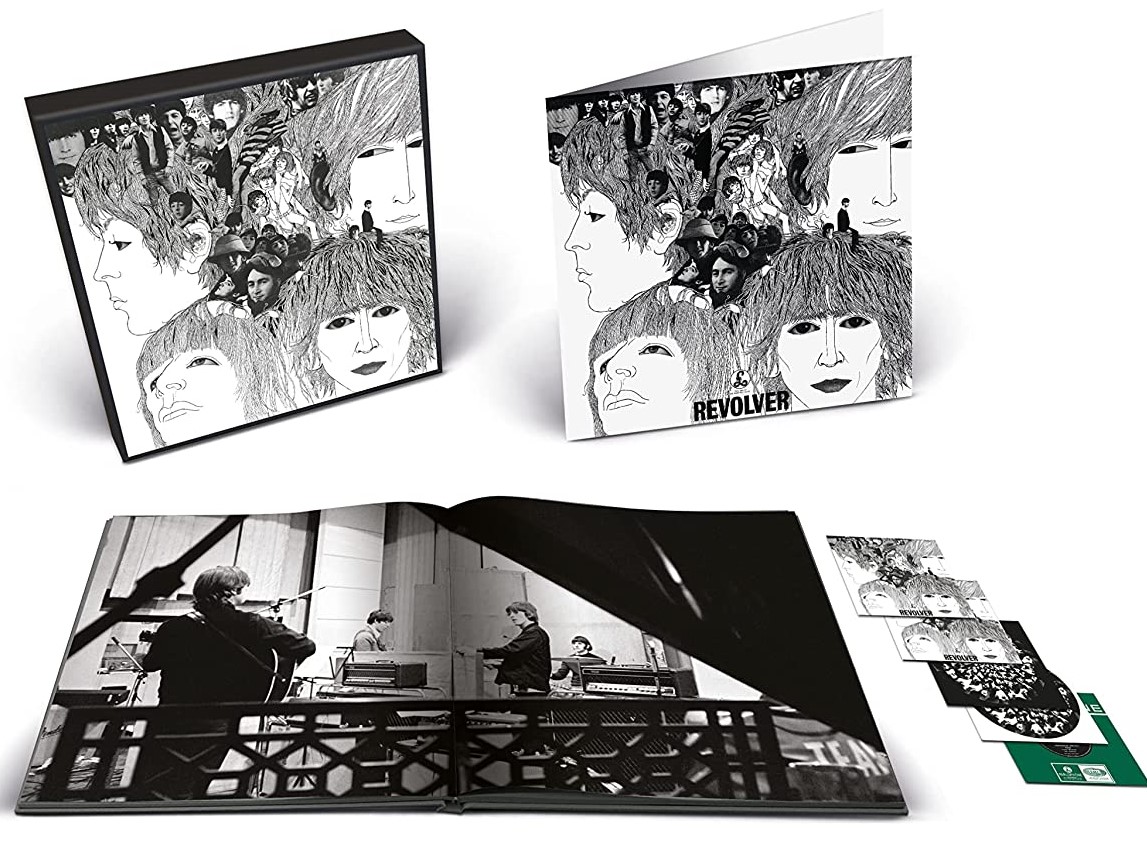 On October 28th, 2022, various new editions of the 14 track “Revolver” album were released that feature the amazing new stereo mix by Giles Martin. The “Special Edition Deluxe 2CD Set” features “And Your Bird Can Sing” in its new stereo mix as well as “First version - take 2” from the 1966 session tapes, this without the giggling as heard in "Anthology 2." The “Deluxe Edition,” which is available as a 5 CD box set and a 4LP / 1 EP box set, includes these versions as well as "First version - take 2" with giggling as contained on "Anthology 2," "Second version - take 8" and the original mono master from 1966. The 2022 Giles Martin stereo mix of the album was also made available for the first time as a vinyl picture disc for a limited time. On October 28th, 2022, various new editions of the 14 track “Revolver” album were released that feature the amazing new stereo mix by Giles Martin. The “Special Edition Deluxe 2CD Set” features “And Your Bird Can Sing” in its new stereo mix as well as “First version - take 2” from the 1966 session tapes, this without the giggling as heard in "Anthology 2." The “Deluxe Edition,” which is available as a 5 CD box set and a 4LP / 1 EP box set, includes these versions as well as "First version - take 2" with giggling as contained on "Anthology 2," "Second version - take 8" and the original mono master from 1966. The 2022 Giles Martin stereo mix of the album was also made available for the first time as a vinyl picture disc for a limited time.
Live Performances
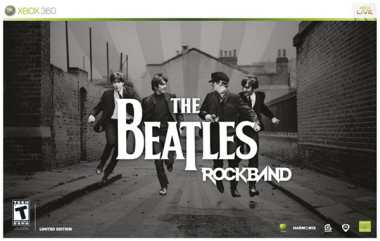 Although no strings, horns, sitars or tape loops are present on the song, the intricate harmony guitar playing on "And Your Bird Can Sing" prohibited The Beatles from including this “Revolver” track, as well as all other “Revolver” tracks, in any of their 1966 live shows. However, The Beatles edition of the game “Rock Band” gives us a glimpse of what it might have been like had they performed the song in Japan. Although no strings, horns, sitars or tape loops are present on the song, the intricate harmony guitar playing on "And Your Bird Can Sing" prohibited The Beatles from including this “Revolver” track, as well as all other “Revolver” tracks, in any of their 1966 live shows. However, The Beatles edition of the game “Rock Band” gives us a glimpse of what it might have been like had they performed the song in Japan.
Conclusion
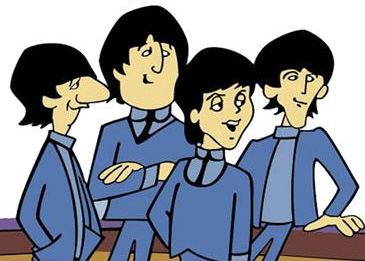 While most US Beatles enthusiasts became familiar with “And Your Bird Can Sing” from its inclusion on the multi-million selling album “Yesterday…And Today,” younger fans undoubtedly got to know it from its prominent use on The Beatles Cartoon series. The song was used as the theme of the TV series during its 1967 season which featured animated shots of the group interspersed with actual 1967 still photos of the individual group members. While most US Beatles enthusiasts became familiar with “And Your Bird Can Sing” from its inclusion on the multi-million selling album “Yesterday…And Today,” younger fans undoubtedly got to know it from its prominent use on The Beatles Cartoon series. The song was used as the theme of the TV series during its 1967 season which featured animated shots of the group interspersed with actual 1967 still photos of the individual group members.
 Although this young audience couldn’t make heads or tails of the lyrics, neither could fans of any age. It was, instead, the irresistible musical interplay of the guitar work and the harmonic vocal texture that became its attractive focal point. "The dual guitars they are playing sound like they're from heaven to me," Guns N' Roses' guitarist Slash exclaimed in 2009. And as the book “The Complete Guide To The Music Of The Beatles” suggests, “The track may have been fancy paper ‘round an empty box, but the package sounded so good that no-one cared.” Although this young audience couldn’t make heads or tails of the lyrics, neither could fans of any age. It was, instead, the irresistible musical interplay of the guitar work and the harmonic vocal texture that became its attractive focal point. "The dual guitars they are playing sound like they're from heaven to me," Guns N' Roses' guitarist Slash exclaimed in 2009. And as the book “The Complete Guide To The Music Of The Beatles” suggests, “The track may have been fancy paper ‘round an empty box, but the package sounded so good that no-one cared.”
Song Summary
“And Your Bird Can Sing”
Written by: John Lennon / Paul McCartney
-
Song Written: January - April, 1966
-
Song Recorded: April 26, 1966
-
First US Release Date: June 20, 1966
-
-
US Single Release: n/a
-
Highest Chart Position: n/a
-
British Album Release: Parlophone #PCS 7009 “Revolver”
-
Length: 2:02
-
Key: E major
-
Producer: George Martin
-
Engineers: Geoff Emerick, Phil McDonald
Instrumentation (most likely):
-
John Lennon - Lead Vocals, Rhythm Guitar (1965 Epiphone 230TD Casino), handclaps
-
Paul McCartney - Bass Guitar (1964 Rickenbacker 4001S), Lead Guitar (1962 Epiphone 230TD Casino) Harmony Vocals, handclaps
-
George Harrison – Lead Guitar (1965 Epiphone 230TD Casino), Harmony Vocals, handclaps
-
Ringo Starr – Drums (1964 Ludwig Super Classic Black Oyster Pearl), tambourine, handclaps
Written and compiled by Dave Rybaczewski
|
IF YOU WOULD LIKE TO MAKE A DONATION TO KEEP THIS WEBSITE UP AND RUNNING, PLEASE CLICK BELOW!
Sign Up Below for our MONTHLY BEATLES TRIVIA QUIZ!
|